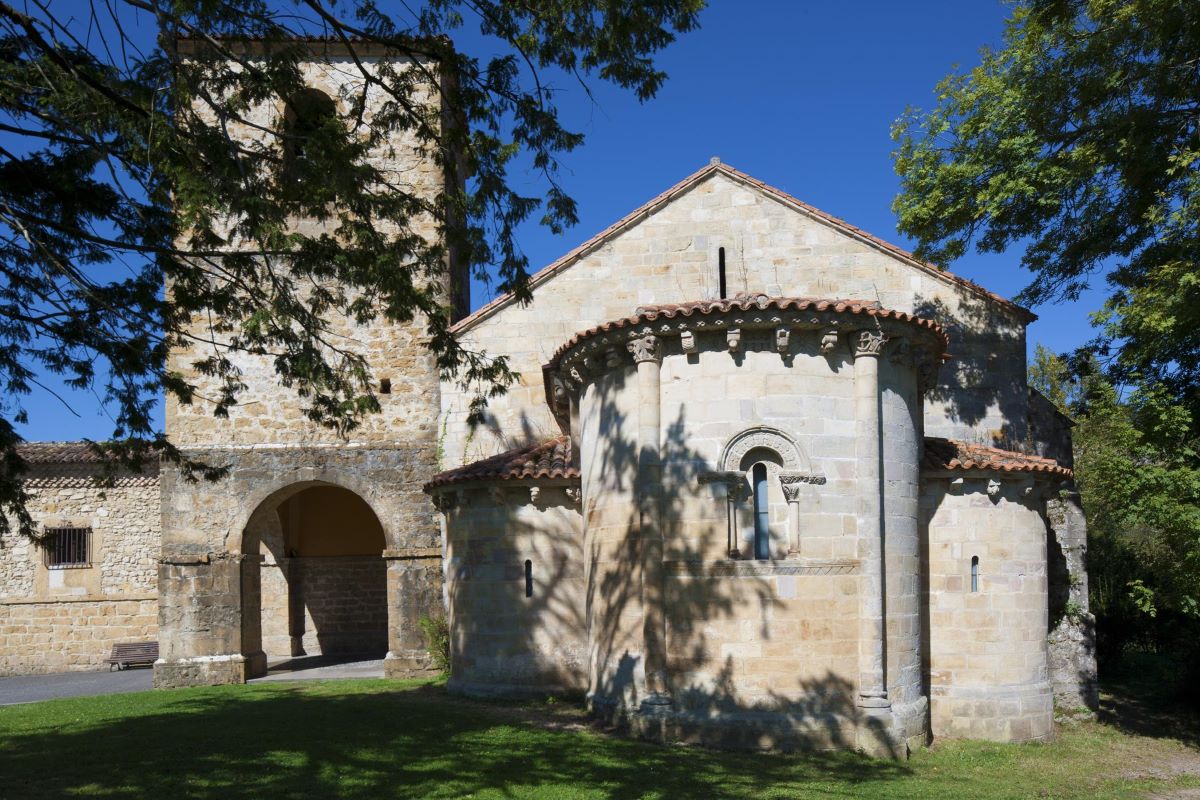
Image | Parador.es
On the banks of the River Sella and surrounded by the Picos de Europa, in a place of incomparable beauty is Cangas de Onís, which was the capital of the kingdom of Asturias (Spain) until 774. Here the battle of Covadonga (722) was fought, an epic fight that exalted the figure of Don Pelayo against the Islamic occupation and that meant the beginning of the Christian reconquest of the Iberian Peninsula.
Many choose Cangas de Onís for a rural getaway attracted by the beauty of the Picos de Europa, the tranquility of this beautiful town and the sanctuary of Covadonga, the refuge of Pelayo and the Christians during their battles against the Muslims. Visiting this beautiful municipality requires at least a couple of days, so some tourists decide to stay at the Parador de Cangas de Onís during their stay.
What is a National Parador in Spain?
The Paradores de Turismo in Spain are hotels that are located in peculiar places such as historic buildings, convents or palaces, all of them rehabilitated to accommodate tourists. Behind the Paradores de Turismo is National Heritage, the sole shareholder of a public limited company with 100% public capital.
The Paradores de Turismo are not cheap accommodation but their objective is to rehabilitate historical buildings and environments that allow you to discover part of Spanish history and promote quality tourism in those places where private initiative has not yet arrived. The paradores are found throughout the country with a predominance in Galicia, Castilla y León and Andalusia.
Normally, travelers who want to spend the night in one of them have to pay between 95 and 155 euros, although they can benefit from the offers that paradores launch to different groups, such as young people or retirees. The most affordable months are from November to February.
On their journey, customers can find three categories of inns: three, four and five stars. This rating, together with the type of room selected, will affect the final price that travelers pay per night.
What is the Parador de Cangas de Onís like?
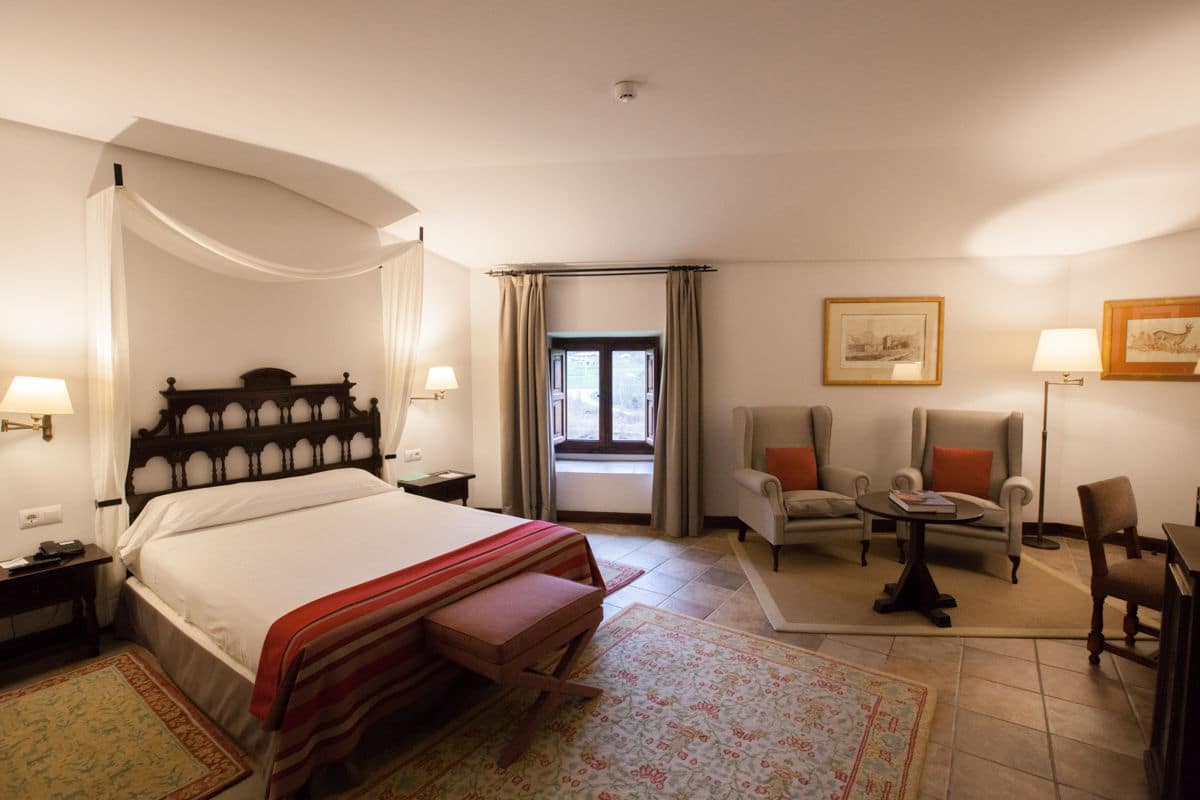
Image | Which hotel is it!
The Parador de Cangas de Onís is the old Monastery of San Pedro de Villanueva, a beautiful building, one of the oldest in Asturias, with stone and wood rooms decorated in a traditional and elegant way.
This hotel is located two kilometers from Cangas de Onís and is a perfect starting point if you want to visit the Natural Park of Los Picos de Europa, the Sanctuary and the lakes of Covadonga and even coastal towns such as Llanes or Ribadesella.
The origin of the Parador de Cangas de Onís is linked to the lineage of the first Asturian kings. It was built in the times of Alfonso I, husband of Queen Ermesinda, daughter of Don Pelayo, in memory of King Favila. That first building was a royal pantheon and a pre-Romanesque basilica. Nothing remains of that primitive pre-Romanesque building because in the XNUMXth century it was renovated in a Romanesque style and later, in the XNUMXth century, the Monastery of San Pedro de Villanueva was transformed to the baroque taste of the time.
Like many other religious buildings, in the XNUMXth century it was confiscated and abandoned. In the year 1097 it was declared a national monument and in 1998 it was inaugurated as a parador de turismo.
How to get to the Parador de Cangas de Onís?
This parador is located in the municipality of Villanueva de Cangas, 2 km from Cangas de Onís. Its main mode of access is the A8 Oviedo-Santander, with exits to the N-634 towards Lieres / Arriondas or Cangas de Onís / Picos de Europa, depending on the origin. In Arriondas it connects with the N-625, with indicators to Villanueva de Cangas.
What to see in Cangas de Onís?
Roman bridge
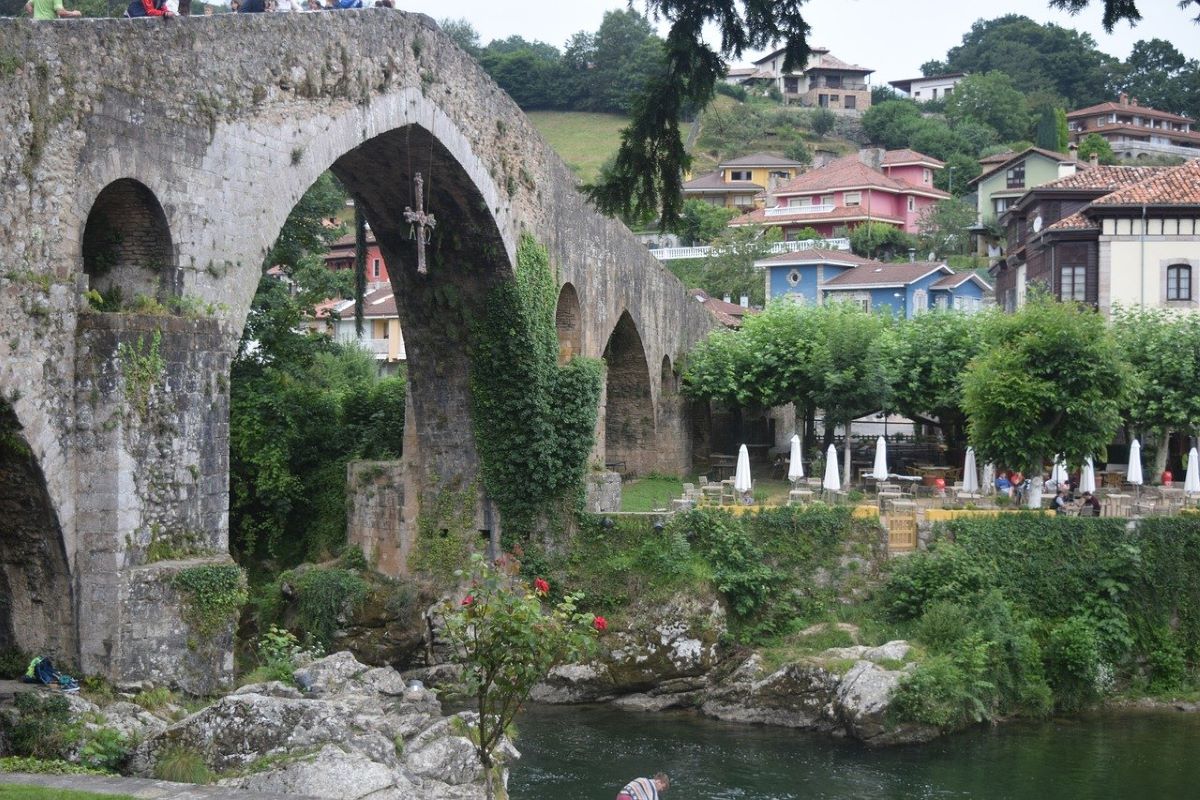
Image | Pixabay
It is the most representative monument in Cangas de Onís with its large pointed central arch, although it actually dates from the late Middle Ages. It came to replace another bridge of Roman origins, as indicated by the thick buttresses and the sharp cutwaters.
The bridge has had great strategic and commercial value for the municipality, since until the XNUMXth century it was the only one that saved the mighty Sella, which made this passage fundamental for communication between Asturias and Cantabria.
Hermitage of the Holy Cross
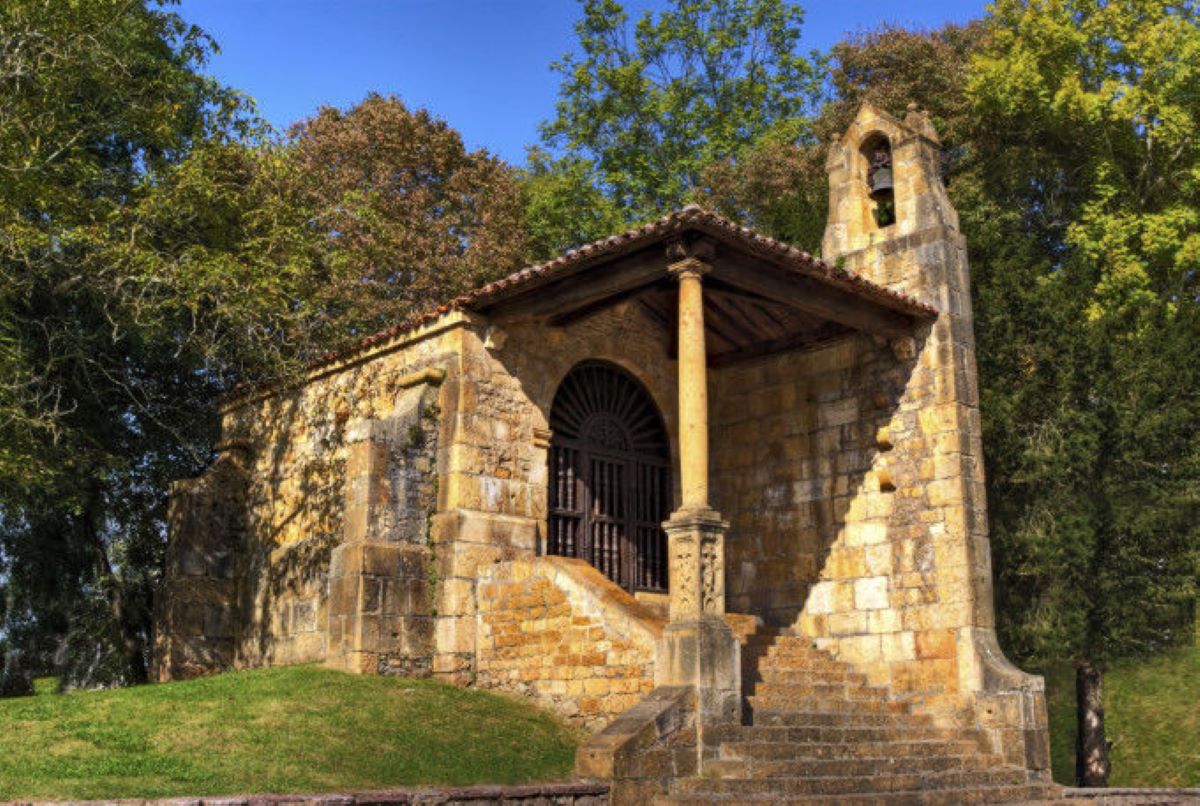
Image | vsrrey / Shutterstock
The hermitage was built in 437 AD and has guarded the Victoria Cross from the s. VIII, the one that according to tradition don Pelayo raised in the battle of Covadonga against the Muslims.
This temple was built on a funerary dolmen that was arranged there in 4.000 BC. This was uncovered with a rehabilitation after the Civil War and can be seen inside.
The Church of the Asunción,
This church is in the square of the old town hall. It was built in 1963 and its 33-meter tower draws attention for the arrangement of its six bells on three floors.
Statue of Don Pelayo
In front of the church of the Assumption stands the statue to Don Pelayo. He was the hero of the Christian reconquest of the peninsula from the Muslims. He was the first king of Asturias, an indomitable warrior and a born strategist. His tomb is in his refuge: the Santa Cueva de Covadonga.
The Covadonga Cave
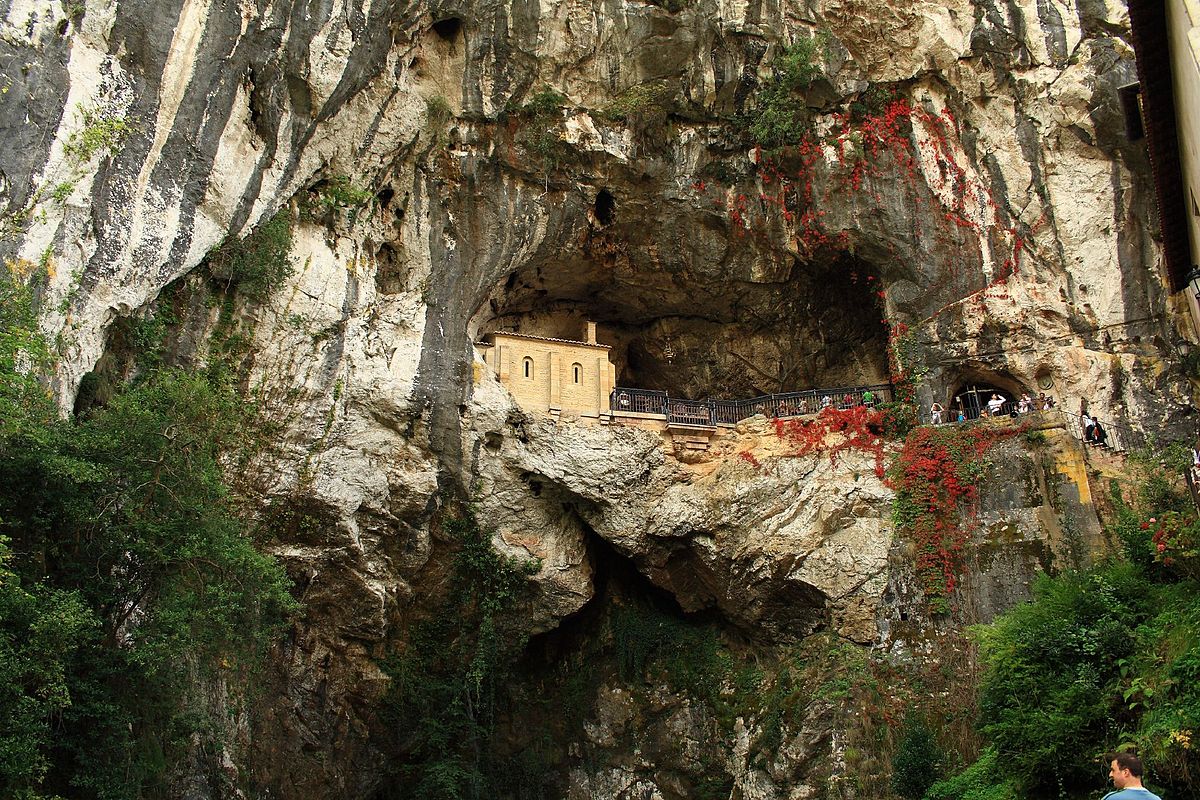
Image | Wikipedia
The Santa Cueva de Covadonga is a Catholic sanctuary located in the Principality of Asturias. Legend has it that Don Pelayo defeated the Muslims here but historians say that the most likely thing is that Pelayo and his men used it as a refuge in their confrontations are the Muslims and they will carry a carving of the Virgin there after their victory in the battle of Covadonga
To climb the grotto you have to overcome more than a hundred steps. In the cave are the tombs of Pelayo, his wife Gaudiosa, his daughter Emersinda and King Alfonso I. The river Deva falls under the Holy Cave and feeds the Fountain of the Seven Pipes. As a curiosity, it is said that single young women who drink this water will marry the following year.
Basilica of Santa Maria la Real de Covadonga
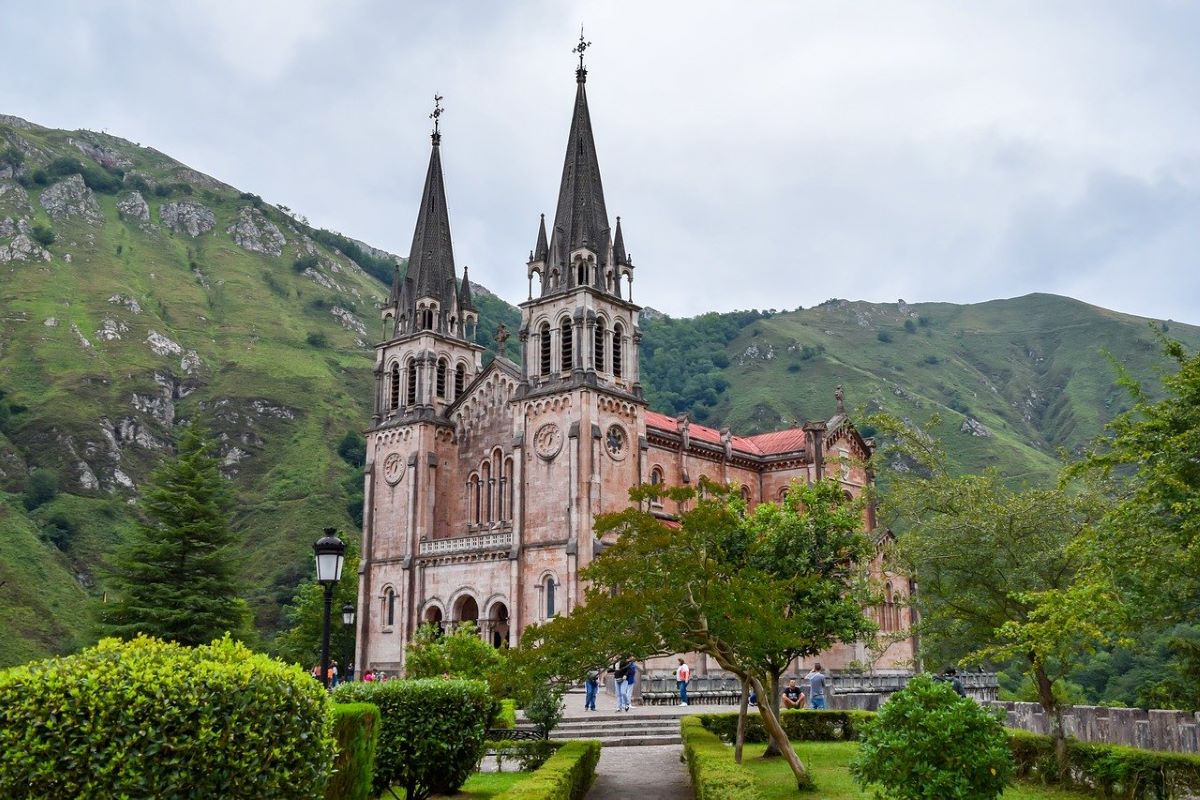
Image | Pixabay
It is a Roman Catholic church designed by Roberto Frassinelli and built between 1877 and 1901 by the architect Federico Aparici y Soriano in pink limestone, which contrasts with the green of the landscape.
An excursion to the cave and the basilica of Covadonga is a mandatory activity in Cangas de Onís as it is in the Picos de Europa, since it is located within the National Park.
The peaks of Europe
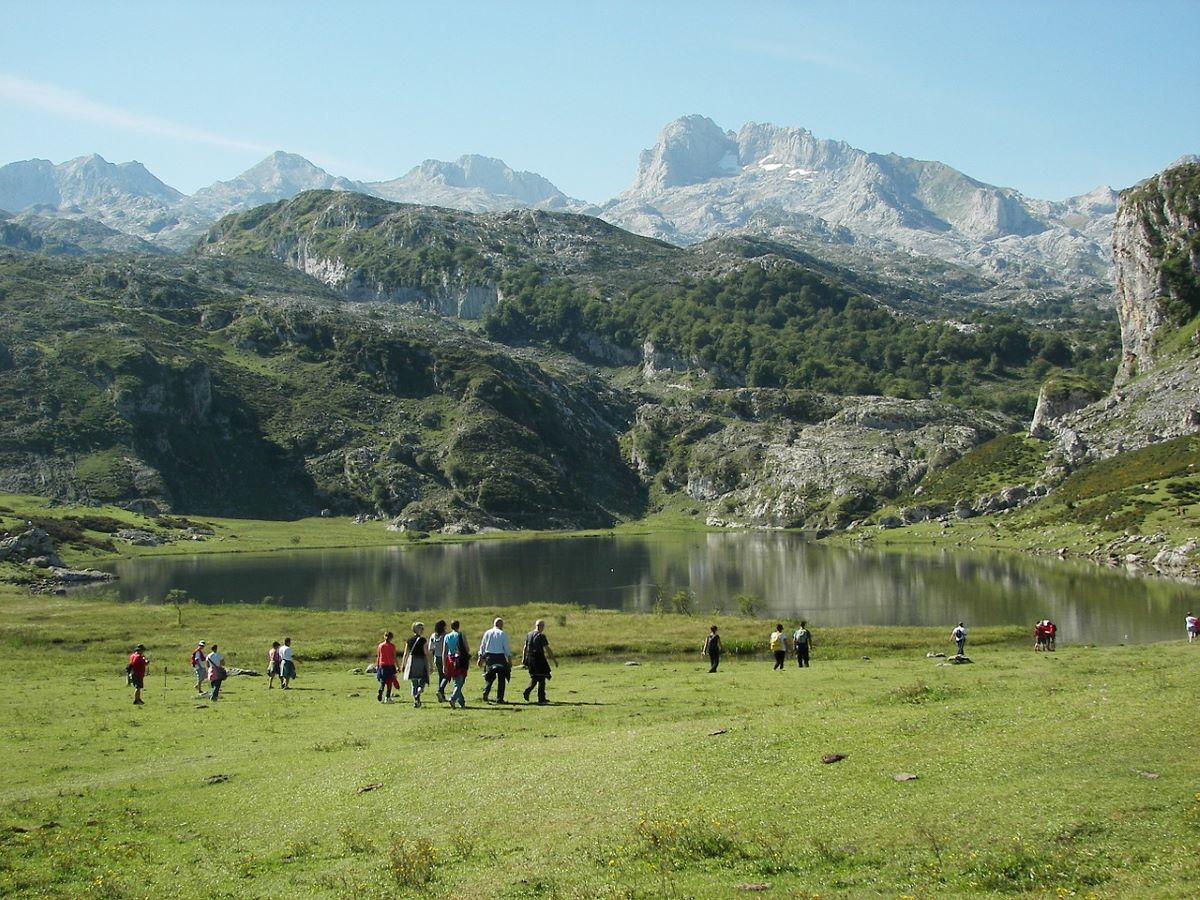
Image | Pixabay
It is the first National Park declared in Spain together with Ordesa and Monte Perdido. More than 2.000 hectares of the council of Cangas de Onís group this natural territory. The highest peaks of the Cantabrian Mountains are found in this area.